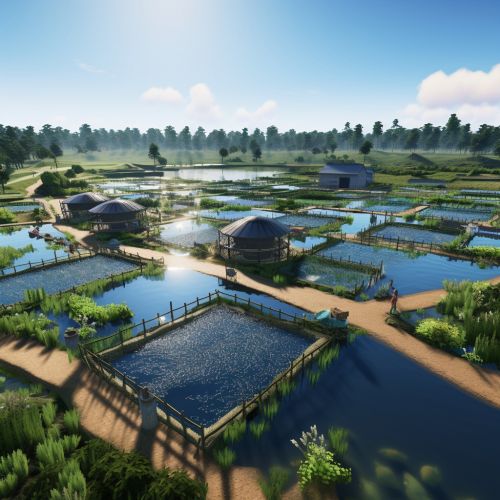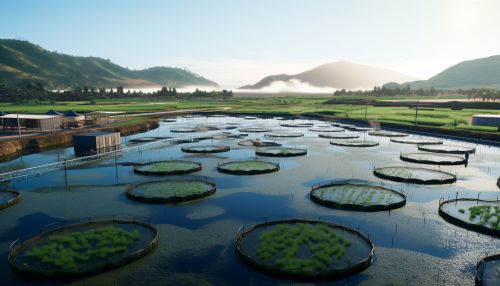Aquaculture
Overview
Aquaculture, also known as aquafarming, is the cultivation of aquatic organisms such as fish, shellfish, and aquatic plants under controlled conditions. It involves the breeding, rearing, and harvesting of these organisms in all types of water environments including ponds, rivers, lakes, and the ocean. Aquaculture is a rapidly growing sector and is recognized as a valuable means to meet the increasing demand for seafood and to contribute to global food security.


History
The practice of aquaculture can be traced back to the ancient civilizations of China and Egypt. In China, carp were farmed as early as 2500 BC, while in Egypt, hieroglyphics depict the cultivation of fish in ponds around 2000 BC. Over the centuries, the practice has evolved and diversified, leading to the development of modern aquaculture techniques.
Types of Aquaculture
Aquaculture can be classified into two main types: extensive and intensive.
Extensive Aquaculture
Extensive aquaculture relies on the natural productivity of the water body where the organisms are grown. It is characterized by low stocking densities and minimal management intervention. The most common form of extensive aquaculture is the farming of filter-feeding shellfish such as oysters and mussels.
Intensive Aquaculture
Intensive aquaculture involves high stocking densities and active management of the aquaculture system. This includes the provision of artificial feeds, regular monitoring of water quality, and disease management. Intensive aquaculture is commonly used for the production of high-value species such as salmon and shrimp.
Aquaculture Systems
Aquaculture systems can be categorized based on the type of water environment they utilize: freshwater, brackish water, and marine.
Freshwater Aquaculture
Freshwater aquaculture is the cultivation of aquatic organisms in a freshwater environment. This includes the farming of species such as trout, catfish, and tilapia in ponds, tanks, and cages.
Brackish Water Aquaculture
Brackish water aquaculture involves the farming of organisms in water that has a salinity level between that of freshwater and seawater. This type of aquaculture is often used for the cultivation of species such as shrimp and milkfish.
Marine Aquaculture
Marine aquaculture, or mariculture, is the farming of marine organisms in the ocean or in tanks that are supplied with seawater. It includes the cultivation of species such as salmon, oysters, and seaweed.
Aquaculture Practices
Aquaculture practices vary widely depending on the species being farmed, the type of aquaculture system used, and the specific environmental conditions of the farm. However, most aquaculture practices involve a few common steps: seed production, grow-out, and harvest.
Seed Production
Seed production involves the breeding and rearing of young organisms (seeds) for stocking in grow-out systems. This can be done through natural spawning or through artificial methods such as hormone-induced spawning and in vitro fertilization.
Grow-out
The grow-out phase is the period during which the seeds are grown to market size. This involves feeding, monitoring of water quality, and management of diseases and pests.
Harvest
Harvest involves the collection of mature organisms from the grow-out systems. Harvest methods vary depending on the species and the type of aquaculture system used.
Environmental Impact
Aquaculture has both positive and negative impacts on the environment. On the positive side, it can contribute to the conservation of wild fish populations by providing an alternative source of seafood. However, it can also lead to environmental degradation through the discharge of waste, the use of chemicals and antibiotics, and the escape of farmed organisms into the wild.
Future of Aquaculture
The future of aquaculture is likely to be shaped by technological advancements, environmental considerations, and market demands. There is a growing interest in sustainable aquaculture practices that minimize environmental impact and ensure the welfare of farmed organisms. Additionally, there is a trend towards the diversification of aquaculture species and the development of new aquaculture systems such as recirculating aquaculture systems (RAS) and offshore aquaculture.
